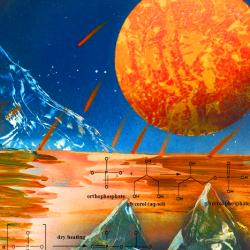Phosphorus (P) is an essential element for life. It occurs in living beings in the form of phosphate, which is ubiquitous in biochemistry in the form of phosphate esters that are essential for life. This review article discusses some aspects such as: what were the most likely sources of P on the early Earth? How did it become incorporated into the biological world to form the P compounds that life employs today? Can meteorites be responsible for the delivery of P? What were the most likely solvents on the early Earth and out of those which are favorable for phosphorylation? Or, alternatively, were P compounds most likely produced in relatively dry environments? What were the most suitable temperature conditions for phosphorylation?



